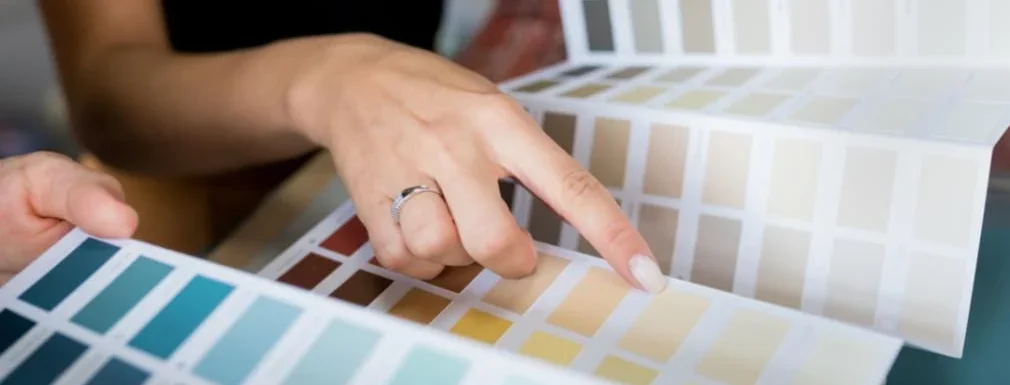Sellers have had a heyday in the housing market over the past couple of years—and for good reason. The demand for housing has been extremely high due to lower-than-average interest rates, which makes buying a home cheaper than ever. In most markets, homes are flying off the shelves, no matter their condition.
While selling a home is perhaps easier now than it would be in a normal market, it can still be well worth it to make sure you get the most return before listing it. To optimize chances of high-dollar offers and a quick sale, don’t just stop after adding new door handles and a coat of paint or fixing faulty sinks and toilet seals. For example, if you’re listing an older home, be sure that you’ve properly repaired the property to bring it up to code, and remedied issues that would turn off buyers. Whether there is a broken water heater, a leaky roof, or crumbling front stairs, most buyers will want these issues to be taken care of before making an offer on a home.
In addition to taking care of the repairs, many sellers will opt to stage their homes with furniture and inspiring decor for open houses. Staging a home the right way can be an easy way to make it appeal to a wider pool of buyers—and can also increase your chances of getting an offer quickly after you list. You can hire professional staging companies, but if you’re on a budget—or if you’re just curious about some of their tricks of the trade—here are some recommendations to stage a home. To help you get started, Fund That Flip compiled a list of 10 ways to stage a home for sale that don’t break the bank, using research from movers, real estate agents, and home improvement experts. Here’s what you should know.
10 tips for staging a home on a budget

Artur_Nyk // Shutterstock
Use neutral colors
Buyers want to be able to see the homes they tour as their own—they don’t want to picture the home as someone else’s space. The bright red accent wall in a living room may be a form of self-expression, but just that one accent wall could be enough of a distraction that buyers will opt to look elsewhere.
Use neutral colors for the walls, ceilings, and any other spaces. As you prep your home to go on the market, pick up some neutral paint to cover any accent walls or unusual paint colors. Light taupes, grays, or off-whites are the optimal colors—steer away from anything bold to create a neutral look that buyers can picture as a blank slate to begin decorating to their own tastes.

Pixel-Shot // Shutterstock
Highlight storage space
Most buyers will consider a home’s storage space as part of the decision process—which is why it’s important to highlight the storage a home offers. Buyers want enough space to store clothes, shoes, food, holiday decorations, and everything else under the sun.
To make the storage in a home as appealing as possible, showcase the closets and drawers by placing folded clothing neatly in baskets or bins, using shoe racks to display shoes, and organizing linen closets, too. Interested buyers will open closets and cabinets to determine whether the spaces fit their needs and lifestyle, so an uncluttered, organized space is your best bet for showcasing the storage a home offers.

Martin Gardeazabal // Shutterstock
Bake cookies
Buyers want to be able to picture themselves living in a house—they want it to feel like home. And what gives a home more of that warm, inviting feel than a plate of just-baked cookies? It may sound silly, but the smell of freshly baked cookies or a loaf of warm bread can be extremely enticing to buyers.
Baking cookies shortly before a showing—and placing them out on the counter with a note for visitors to help themselves—can set your home apart from the others on the market. If you don’t have time to bake before each showing, light a cookie-scented candle or warm some vanilla in a wax warmer or on the stove to make a house smell more inviting.

Photographee.eu // Shutterstock
Avoid showing too much personal taste
Ceramic figurine collections or unique music memorabilia might capture your trendy or unique interests, but chances are that potential buyers may not necessarily agree. Staging a home with items that cater to a specific personal taste isn’t going to appeal to all buyers, and in some cases, a funky retro furniture collection can be a big turnoff.
That’s why it’s important to depersonalize a space as much as possible before listing a home. Don’t opt for kitschy decor, flower-covered wallpaper, or personal photos when staging a home. It will be easier for prospective buyers to picture themselves in a home—and will likely help you close a deal a lot quicker, too.

Iglenas // Shutterstock
Use mirrors to make small rooms look larger
Small spaces in a home don’t have to feel small—you just need a few mirrors to create the illusion that they’re larger than they appear. Using mirrors as a staging tool to open up interior spaces is one of the oldest—and best—tricks in the book. Adding mirrors to an enclosed space like a bedroom or hallway will instantly make it appear larger than it actually is—which will appeal to buyers who tour the home.
Strategically place a mirror near windows to bring more reflective natural light into the room, which will illuminate dark spaces. Adding more mirrors to a small bathroom can also help to enlarge it, which can be a handy trick to employ for half-bathrooms or bathrooms with limited space.

New Africa // Shutterstock
Use air mattresses to stage a bed
Empty bedrooms—or bedrooms being used as storage or play areas—aren’t generally appealing to buyers. You may not want to purchase a new bed just to stage your home for buyers though—and the good news is that you don’t have to. If you want to turn an empty room into a staged bedroom, purchase an inexpensive air mattress and prop it up on some boxes instead.
Then simply cover the boxes with a bed skirt and then top the air mattress as you would any other bed—with a nice comforter and some pillows. Add some inexpensive end tables to the mix—or even some nicer TV trays—and some simple decor and you’ll create a guest suite that’s bound to be a lot more appealing to buyers than a cluttered storage room.

Ivchenko Evgeniya // Shutterstock
Color-coordinate half-empty closets
Neatly organized, uncluttered spaces are appealing to buyers—and that goes for closets as much as it does for living spaces or other shared rooms. The best way to make closets more appealing is to leave them half full. That creates the illusion that the closets have more space than they actually do—and also makes it easier to organize them. After selecting some articles of clothing, display them by color. This type of neat, color-coordinated organization will help make your closets—or other spaces, like cabinets for cleaning supplies—more appealing to buyers.

TabitaZn // Shutterstock
Decorate with fresh flowers, plants, and citrus
Adding in fresh flowers and plants can be a great way to create more ambiance, add color, and give a welcoming vibe without turning off buyers. Hang a wreath of fresh greens and flowers on your door, or strategically place vases with flowers throughout the home. Opt to add a bowl of fresh citrus fruits to the kitchen counter or tabletop to brighten up the room while adding the fresh scent of citrus in the air. Bathroom counters can benefit from the addition of a fresh floral arrangement or small plants—but don’t overdo it. You want it to feel like a spa, not a flower shop.

Didecs // Shutterstock
Use white towels in your bathrooms
Many of us might not mind the clean-but-worn towels hanging on the racks by the sink or shower, but when it comes to staging a home, they can make a house look and feel dirty—even if it isn’t. Instead, invest in clean white towels that can create a spa atmosphere, which is precisely why hotels and day spas all use bright white towels and sheets. The same goes for shower curtains and bathmats. Avoid decorating a bathroom with darker colors, patterns, or light colors that have seen better days, and opt instead for creating a brighter, cleaner feel.

Drazen Zigic // Shutterstock
Don’t overlook garages, basements and yards
It’s easy to focus on the main living areas of the house, but don’t neglect sprucing up spaces like garages, basements, gardens, walkways, and outdoor stairs. Make sure gardens and outdoor areas don’t look overgrown and remove old items like barbecue grills or patio furniture that have seen better days.
Walkways should be cleared of any debris and look well-lit. To show off the space in a garage or basement, the trick is to stack cardboard boxes and containers vertically to show how the space can be optimized for a buyer’s own storage needs. Plus, it will help these spaces to look more organized, which will be even more appealing to buyers.
This story originally appeared on Fund That Flip
and was produced and distributed in partnership with Stacker Studio.

Mark is the founder of Financial Pilgrimage, a blog dedicated to helping young families pay down debt and live financially free. Mark has a Bachelor’s degree in financial management and a Master’s degree in economics and finance. He is a husband of one and father of two and calls St. Louis, MO, home. He also loves playing in old man baseball leagues, working out, and being anywhere near the water. Mark has been featured in Yahoo! Finance, NerdWallet, and the Plutus Awards Showcase.

